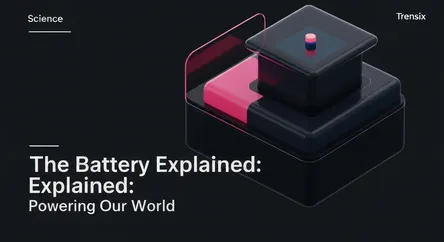Science
The Battery Explained: Powering Our World

An essential guide to batteries, the technology that stores chemical energy to power everything from smartphones to the future of green transportation.
What is it?
A battery is a device that stores chemical energy and converts it into electrical energy through an electrochemical process. It is composed of three main parts: a negative electrode (anode), a positive electrode (cathode), and a separator immersed in a chemical substance called an electrolyte. When connected to a circuit, chemical reactions occur at the electrodes, causing a flow of electrons from the anode to the cathode. This flow of electrons creates a direct current (DC) that powers electronic devices. While some batteries are single-use (primary), others are rechargeable (secondary), allowing the chemical reactions to be reversed by applying an external power source.
Why is it trending?
Battery technology is a major trend due to the global push for decarbonization and the rise of electric vehicles (EVs). Innovations are focused on creating batteries with higher energy density, faster charging speeds, longer lifespans, and improved safety. Breakthroughs in technologies like solid-state batteries, which replace flammable liquid electrolytes with solid materials, promise significant performance and safety boosts. Furthermore, alternatives like sodium-ion batteries are being developed as a more sustainable and cost-effective option than traditional lithium-ion batteries. These advancements are critical for making EVs more practical and for storing energy from intermittent renewable sources like solar and wind.
How does it affect people?
Batteries are integral to modern daily life, powering a vast range of devices from smartphones and laptops to essential medical equipment like pacemakers. The evolution of battery technology directly impacts personal mobility by making electric vehicles a viable alternative to gasoline-powered cars, reducing air pollution and dependence on fossil fuels. On a larger scale, batteries are crucial for stabilizing power grids. By storing excess energy generated from renewable sources, they ensure a consistent and reliable power supply, which is essential for transitioning to a sustainable energy future and mitigating climate change.